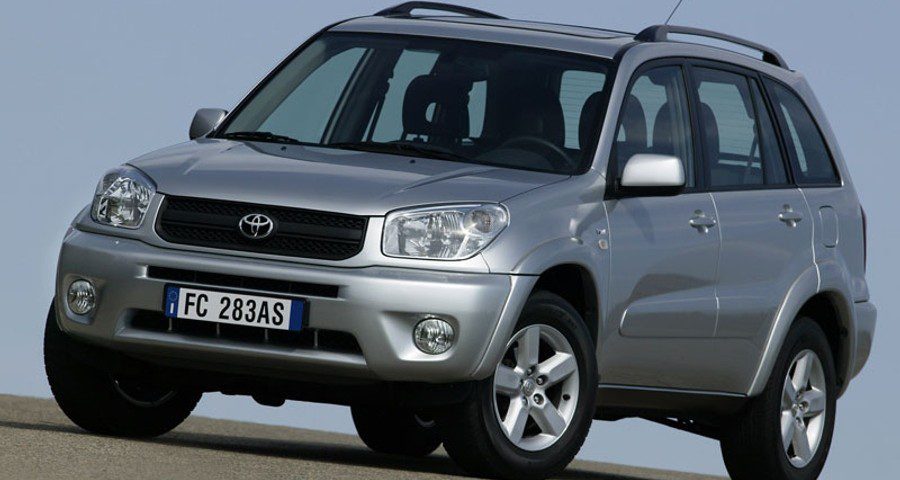
Toyota RAV4 1.8 2WD 5V
В чем суть городского внедорожника? Конечно, не езда по правильной местности, но его внешний вид в сочетании с тем, что его владелец знает, что он будет мобильным даже там, потому что его друзья будут застрять с «обычными» автомобилями, безусловно, достаточно, чтобы привлечь немало клиентов.
Скачать тест PDF: Тойота Тойота РАВ4 1.8 2WD 5V

Есть даже городские внедорожники, которые вообще не заслуживают этого звания. Скажем, Toyota RAV 4 в версии с 1-литровым двигателем и только передним приводом. Рельеф — это только форма кузова и положение за рулем. Или самоделка: помада.
По внешнему виду этот РАВ такой же, как и его полноприводный собрат. Интерьер радует глаз, с прозрачной приборной панелью, которая может вызывать спортивный вид, и трехспицевым рулевым колесом с широкими продольными регулировками сиденья даже для более высоких водителей и хорошим боковым сцеплением сидений.
Некоторые переключатели все еще неудобно установлены, что является обычной особенностью японских автомобилей. Сзади также достаточно места как для пассажиров, так и для багажа. В задней части тоже достаточно комфорта, только на задней скамейке немного больше, чем на передней, так как задняя подвеска довольно жесткая. Особенно это заметно на щебне, но тот, кто несколько раз выезжает на такие дороги, наверняка все равно выберет полноприводную версию.
На асфальте проблем нет, RAV4 хорош и на трассе, и в поворотах, так как шасси не сильно наклоняется. К тому же руль достаточно прямой и достаточно коммуникативный (конечно по меркам этого класса автомобилей), поэтому быстрые повороты не доставляют неудобств, но и доставляют удовольствие.
Поскольку у тестируемого RAV4 не было полного привода, он также смог довольствоваться немного более слабым двигателем, чем полноприводная модель. Таким образом, объем двигателя на два децилитра меньше, но он все же достаточно мощный. Он способен развивать мощность 125 лошадиных сил, что на 25 меньше, чем у двухлитровой модели, но из-за меньшего веса и меньшего трения при передаче мощности на колеса он на самом деле так же быстр, как его полноприводный собрат. Четырехцилиндровый двигатель объемом 1794 куб.см может похвастаться системой VVLTi, логическим продолжением системы VVTi от двухлитрового двигателя. Здесь тоже речь идет о гибком управлении временем открытия всасывающего клапана, но на этот раз не поэтапно, а непрерывно. Результатом является большая гибкость двигателя, поэтому этот RAV4 также хорошо впишется в руки тех, кто любит лениться при обгонах.
Зачем покупателям нужен автомобиль, который дает намек на внедорожное шасси и конструкцию трансмиссии, когда на самом деле это лишь слегка приподнятый универсал, мне не ясно, но одна из причин, вероятно, заключается в цене, которая много дешевле, чем версия с полным приводом. Однако такой комфорт на первом снегу (или скользкой дороге) может быстро перерасти в ярость и любопытные взгляды прохожих.
Внедорожник никуда не денется, крутятся только передние колеса. Или они могут подумать, что вы настолько отчаявшийся водитель, что не можете даже двигаться по снегу с полным приводом. В любом случае есть достаточно причин, чтобы всерьез задуматься, имеет ли вообще смысл покупать внедорожник без полного привода.
Душан Лукич
Фото: Урош Поточник.
Toyota RAV4 1.8 2WD 5V
Основные данные
| Продажи: | Toyota Adria doo |
|---|---|
| Цена базовой модели: | 20.968,32 € |
| Рассчитать стоимость автостраховки | |
| Власть: | 92кВт (125 КМ) |
| Разгон (0-100 км / ч): | 12,2 с |
| Максимальная скорость: | 175 км / ч |
| Расход ECE, смешанный цикл: | 7,4l / 100km |
Техническая информация
| двигатель: | 4-цилиндровый — 4-тактный — рядный — бензиновый — поперечно установлен спереди — диаметр цилиндра и ход 79,0 × 91,5 мм — рабочий объем 1794 см3 — степень сжатия 10,0: 1 — максимальная мощность 92 кВт (125 л.с.) при 6000 об / мин — максимальный крутящий момент 161 Нм при 4200 об / мин — коленчатый вал в 5 подшипниках — 2 распределительных вала в головке (цепь) — 4 клапана на цилиндр (VVT-i) — электронный многоточечный впрыск и электронное зажигание — жидкостное охлаждение 6,4 л — моторное масло 4,0 л — регулируемый катализатор |
|---|---|
| Передача энергии: | двигатель приводит в движение передние колеса — 5-ступенчатая синхронизированная трансмиссия — передаточное число I. 3,545; II. 1,904; III. 1,310 часов; IV. 1,031 часов; V. 0,864; задний ход 3,250 — дифференциал 4,312 — шины 215/70 R 16 (Toyo Radial) |
| Емкость: | максимальная скорость 175 км / ч — разгон 0-100 км / ч 12,2 с — расход топлива (ECE) 9,4 / 6,2 / 7,4 л / 100 км (неэтилированный бензин, начальная школа 95) |
| Перевозка и подвески: | 5 дверей, 5 мест — самонесущий кузов — передняя одинарная подвеска, рессорные ножки, треугольные поперечные рельсы, стабилизатор — задняя одинарная подвеска, двойные поперечные рельсы, винтовые пружины, телескопические амортизаторы, стабилизатор — двухколесные тормоза, передние дисковые (принудительные охлаждение), задний диск, гидроусилитель руля, ABS, EBD — рулевое колесо с зубчатой рейкой, гидроусилитель руля |
| Mase: | пустой автомобиль 1300 кг — допустимая полная масса 1825 кг — допустимая масса прицепа с тормозом 1000 кг, без тормоза 500 кг — допустимая нагрузка на крышу 100 кг |
| Внешние размеры: | длина 4245 мм — ширина 1735 мм — высота 1695 мм — колесная база 2490 мм — колея передняя 1505 мм — задняя 1495 мм — радиус езды 10,6 м |
| Внутренние размеры: | длина 1790 мм — ширина 1390/1350 мм — высота 1030/920 мм — продольная 770-1050 / 930-620 мм — топливный бак 57 л |
| Сундук: | стандарт 410/970 л |
Наши измерения
| T = 11 ° C — p = 972 мбар — отн. vl. = 68% | |
| Разгон 0-100км: | 10,5s |
|---|---|
| 1000м от города: | 32,9-е годы ( 149 км / ч) |
| Максимальная скорость: | 173km / ч (В.) |
| Минимальный расход: | 9,2l / 100km |
| тестовое потребление: | 10,3 л / 100km |
| Тормозной путь при 100 км / ч: | 44,3m |
| Шум при скорости 50 км / ч на 3-й передаче | 58dB |
| Шум при скорости 50 км / ч на 4-й передаче | 56dB |
| Шум при скорости 50 км / ч на 5-й передаче | 56dB |
| Ошибки теста: | безошибочный |
оценка
То, что у тестового RAV4 нет полного привода, снаружи вообще не видно. Так что, если вам нужны только внедорожные помады и хорошие цены, это правильно. Но зимой, например, можно очень пожалеть.
Мы хвалим и упрекаем
двигатель
сидя впереди
внутренняя и внешняя форма
точное рулевое колесо
достаточно места для мелких предметов
ведущие колеса любят крутиться на нейтрали
прозрачность назад

